Lupines grow wild in Nova Scotia, growing along highways and en masse in the fields in late spring. You can also see them growing in gardens, growing alongside other cottage style perennials. Learn how to collect lupine seeds, and harvest and store them for planting in your own perennial garden.
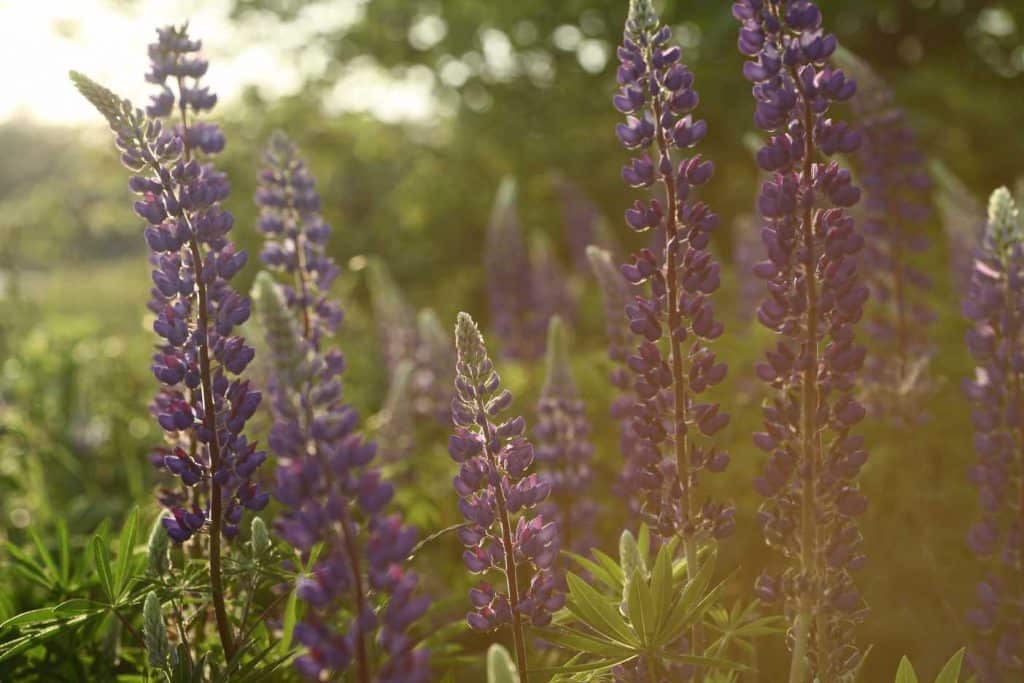
Lupines are members of the pea family, or Family Fabaceae.
Lupinus is the genus for this flowering plant. Lupine, lupin, and bluebonnet are the common names for this plant.
Lupines grow widely across North and South America, and also grow in some areas of the Mediterranean and North Africa.
There are many species within the Lupinus genus, and some of these species include annual plants and shrubs, however most species are herbaceous perennials.
The perennial lupine plant that grows in our province is not native, and was introduced sometime in the 18th and 19th centuries. There are two species of lupines that grow here in our province of Nova Scotia, and these include Lupinus polyphyllus and Lupinus nootkatensis.
Most lupines here grow as wildflowers, however the seeds are easy to collect and bring home to grow in the garden.
There is a species of wild lupine, Lupinus perennis L. which is considered beneficial to plant and grow.
Fun Fact About Lupines In Nova Scotia
In Nova Scotia there is a non-profit organization called the Nova Scotia Lupin Society which was founded in 2018. The society is lobbying the government to make the lupine the official weed of Nova Scotia. They also promote that gardeners spread the beauty of the lupine by collecting lupine seeds and growing lupine plants, therefore making the world a more beautiful place.
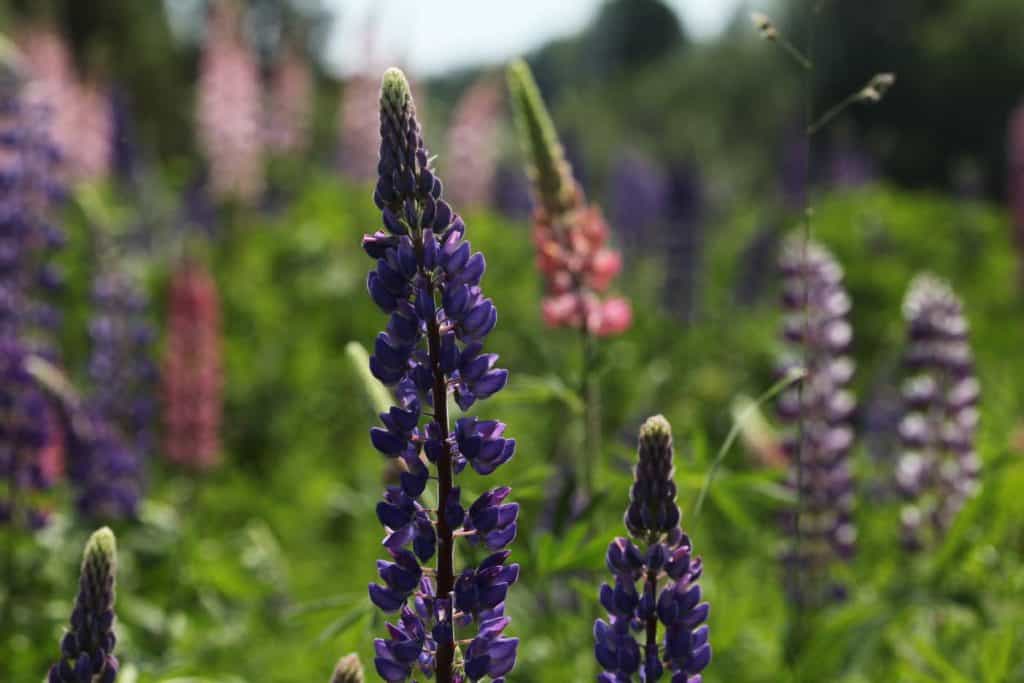
These species are known to be invasive due to the nature of their spread. This is the reason that lupine would be considered a weed.
We still enjoy the beauty of the blooms in season, and they are great for the pollinators as well.
Mid to late June is the time when lupines bloom in our area. They cover the countryside with waves of purple and pink.
I love to get up close and to observe these blooms. I've often stopped at the edge of the highways just to get up close and take pictures.
It is interesting to watch the bees pollinating the lupines.

We now have lupines growing in our own garden. Grown from seed, they have established a nice little patch.
You can easily grow lupines from seed as well. Try winter sowing your lupine seeds, which is a great way to stratify the seeds.
Can You Collect Seeds from Lupines?
You can forage and collect viable lupine seeds if you harvest them at the right time.
The trick to collecting lupine seeds is to catch them at maturity, but before they are dispersed by the seed pods.
Mature pods will often disperse the seeds before an eager seed collector has had a chance to gather them. So make sure to keep your eye on the patch that you plan to harvest from, so that you can catch them at just the right time.
If you are harvesting wild lupines in your area take note of the bloom time for the plants. Harvest time will be approximately several months from bloom time, at which time you will be able to collect the mature seed.
Make sure you collect the lupine seeds before they are released from the pod.
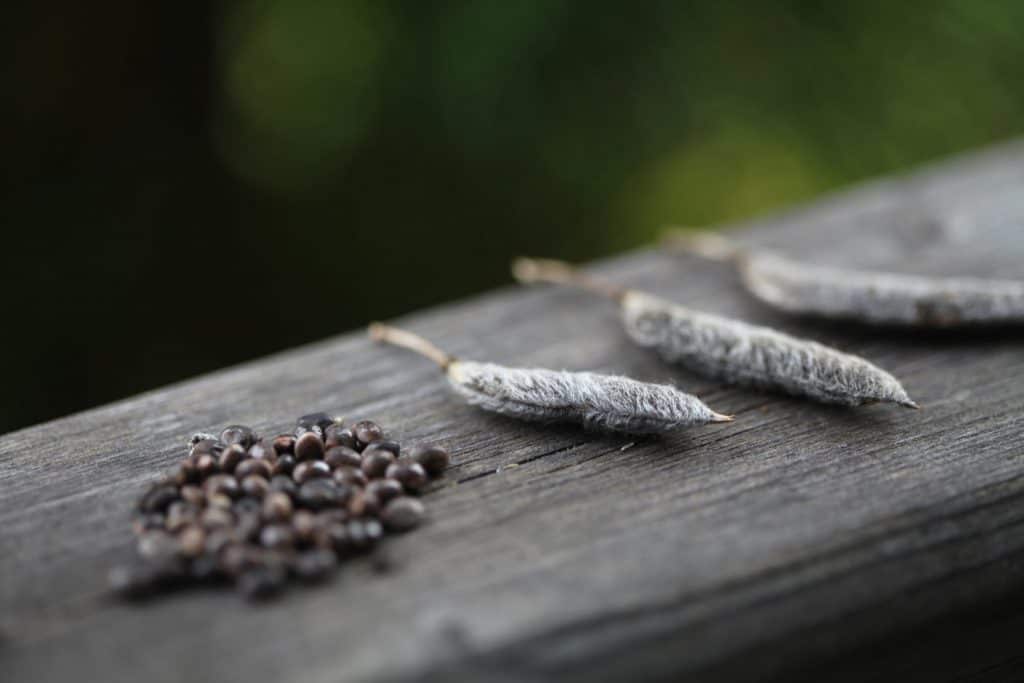
Do Lupines Reseed Themselves?
Lupines are perennials, and return to grow every year.
They also easily reseed, dispersing their seed a distance from the original plant. This is how they spread to form colonies of plants.
The seeds are dispersed with some force as the pods explode their contents a distance away from the mother plant.
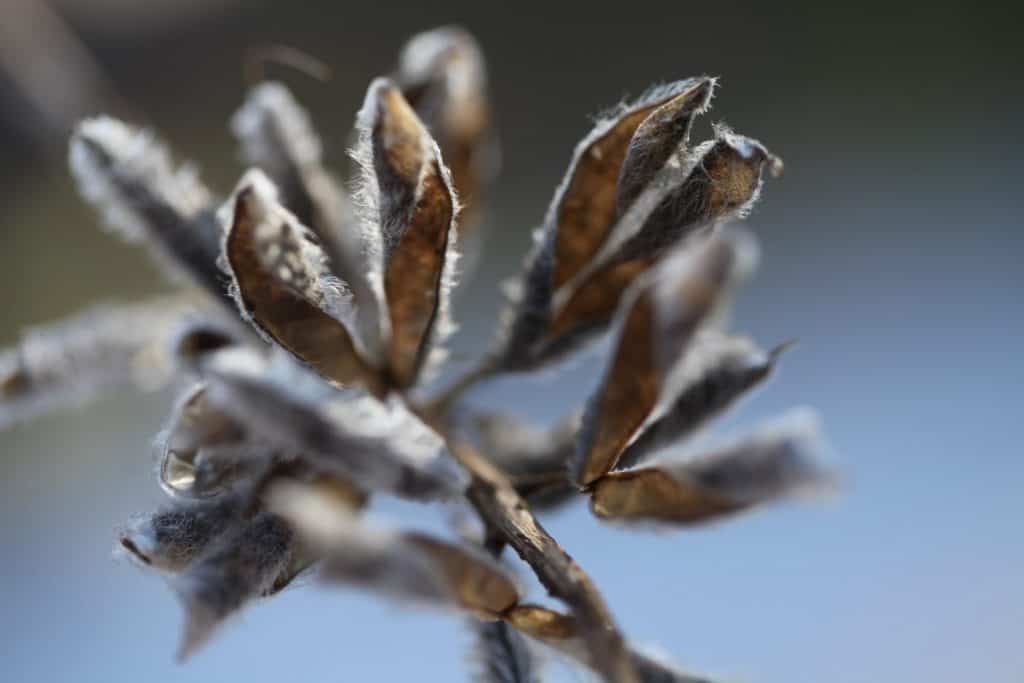
These dispersed seeds then go through the process of natural stratification during the winter months of freezes and thaws, preparing the seeds for germination the following spring.
Lupine Seed Pods
Lupine seed pods are interesting specimens.
Since they are members of the pea family, the seed pods resemble the pods of peas. Lupine seed pods are different in their appearance however, in that they are furry and grey at maturity.

The pods and seeds are not edible, and are toxic if eaten.
Lupine seed pods will generally stick to the stem fairly well, remaining attached as the seeds inside mature. As the seeds become mature the individual pods will begin to open, and often completely open with a pop, sending the seeds flying some distance away.
After the pods that have opened and released their seeds, each half of the pod curls up lengthwise and dries further.
When foraging for lupine seeds, you will often find different stages of seed pods along the stem. Some may be still intact, while others will have released the seeds.
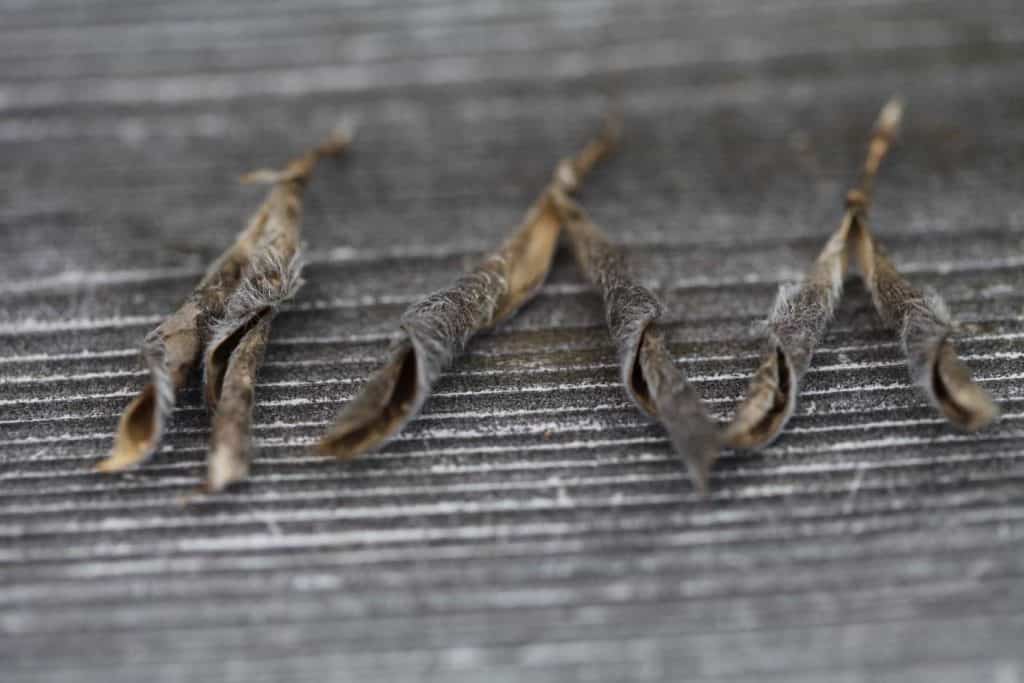
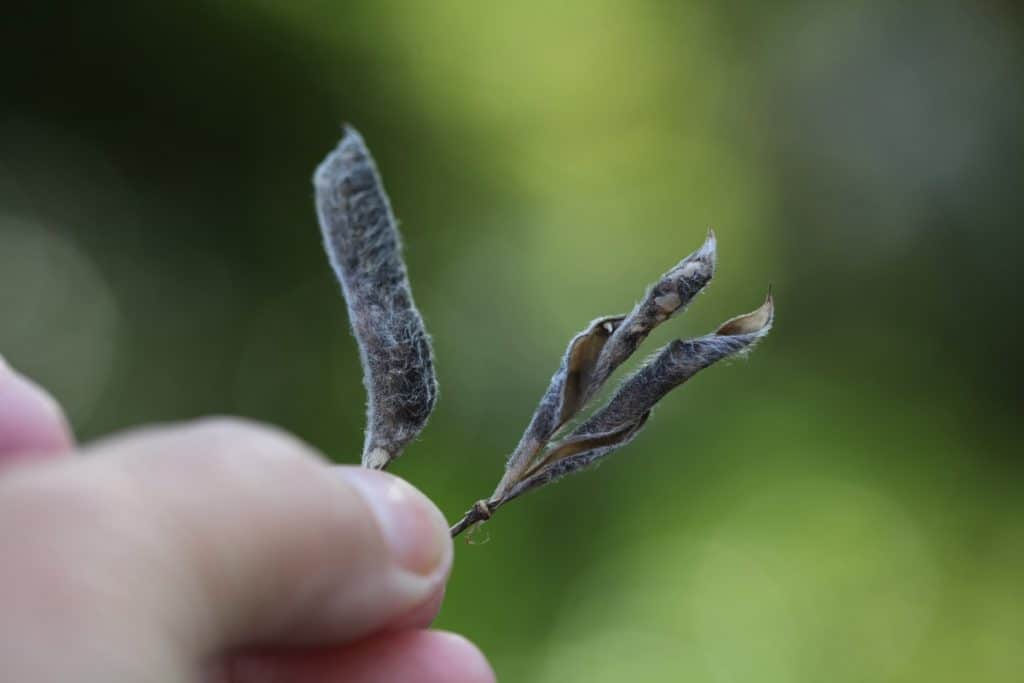
Late in the season if you forage for lupine seeds, you can find unopened pods on the lupine stems along with these curled and empty pods. However, if you wait too long, you may only find the curled and open pods without any seeds to be gathered.
It's important to collect the lupine seeds before they have completely dispersed.

When To Pick Lupine Seed Pods
It's important to allow the lupine seed pods to mature on the plant. Leave the pods in place until they are mature and ready to harvest.
Depending on when the lupines have bloomed, count forward several months to get a good harvest date for mature seed collection.
Our lupines bloom in mid to late June. Seed pods early August are still slightly green and the stems on the plant are still green also.
Although the pods are grey at this point, if you open them up you will see that the seeds are still firmly attached and not yet mature.
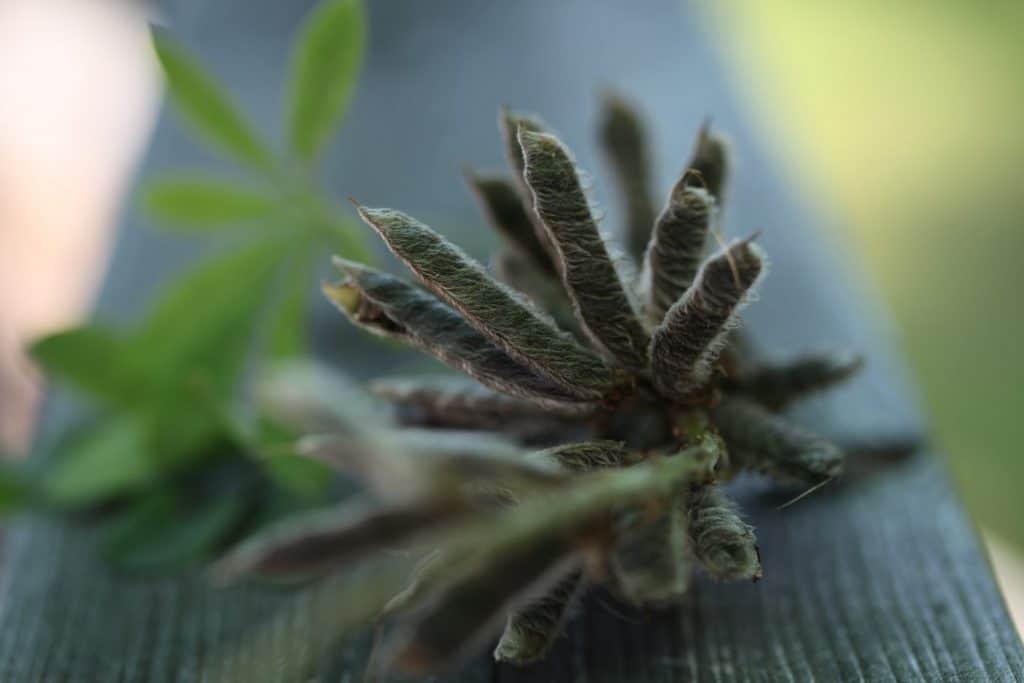

The best time to pick lupine seed pods is when the stems of the plant have turned brown and the pods are crisp. If you give the pods a little shake at this point you can hear the rattling of the seeds as they hit against the insides of the pods.
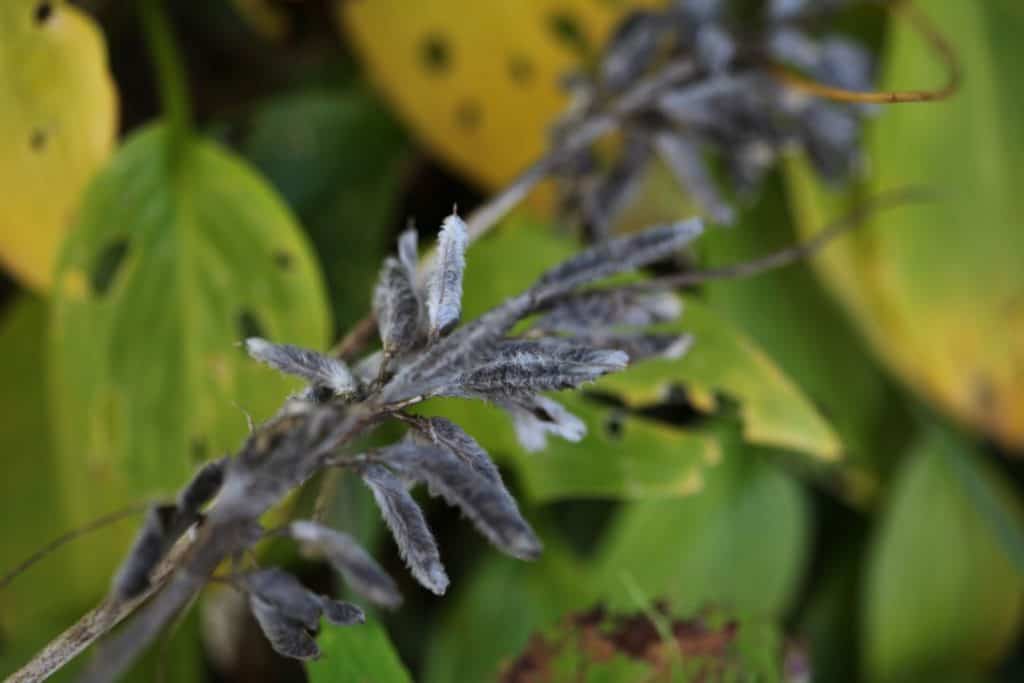
At this point the lupine seeds are mature and ready to collect. You will have better germination rates if collected at this stage.
You can also harvest the pods several weeks earlier than planned, and keep them in a paper bag to dry out more. This way you will be sure to keep the seeds contained and prevent seed dispersal.
Harvesting Lupine Seed Pods
Harvesting lupine seed pods is easy. All you really need is a container to drop the pods into as you gather them.
It is best to harvest on a dry day when the pods are free of moisture if you plan to take the seed pods home for further drying.
You can either cut the whole stem with pods intact and place these into the container, or harvest the individual pods themselves. If harvesting individual pods, pull them gently from the stem making sure not to squeeze them.
If the pods are not fully ripe and could use a little more drying time, you will find that they remain intact during harvest.
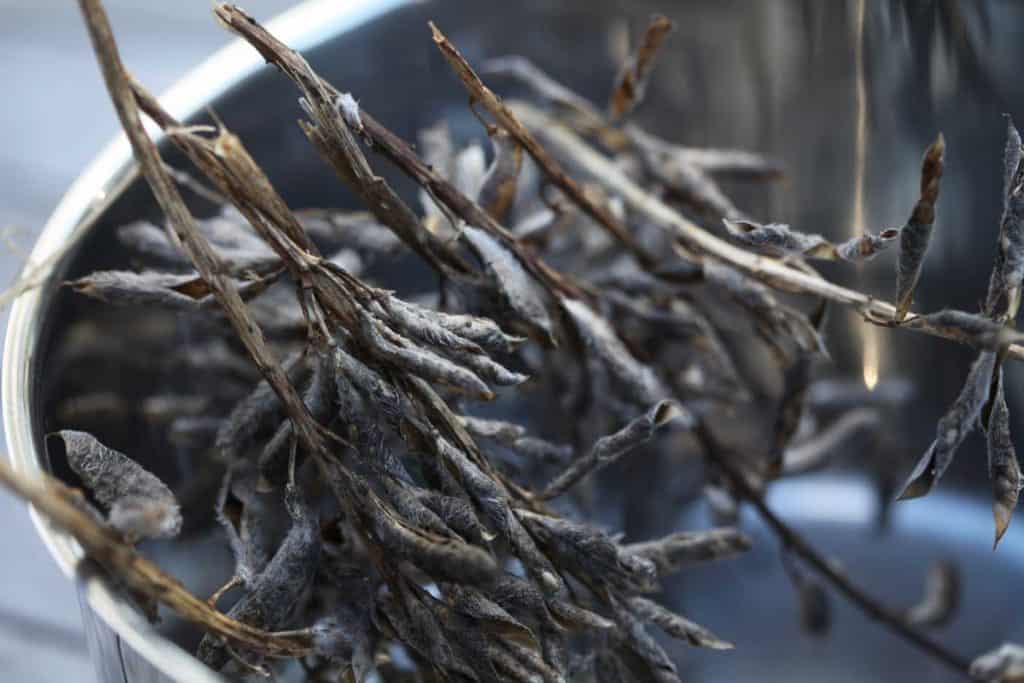
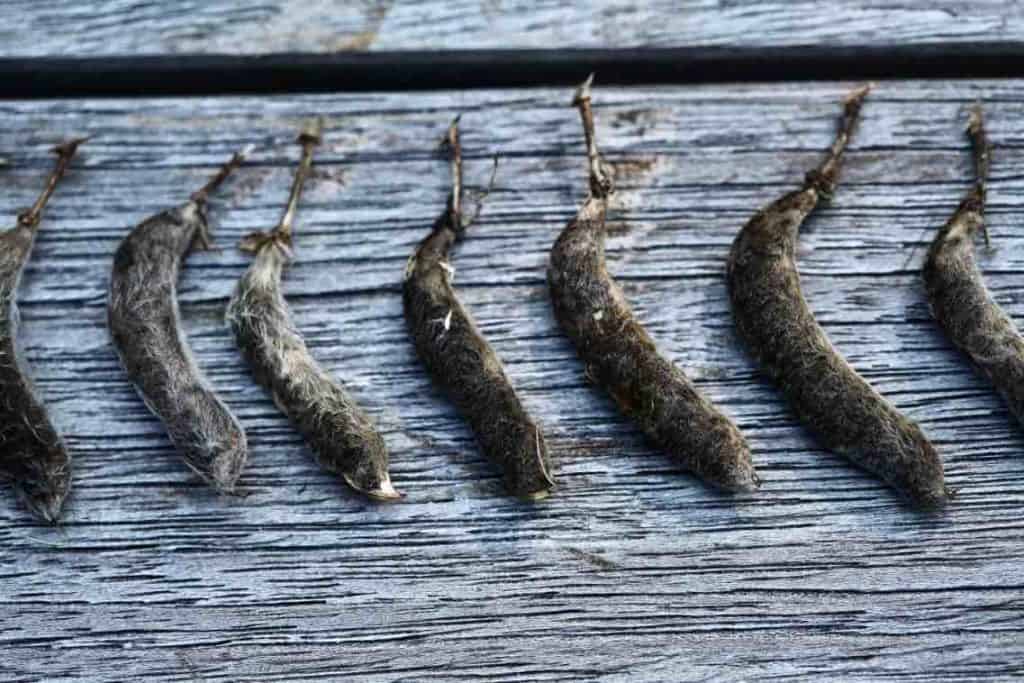
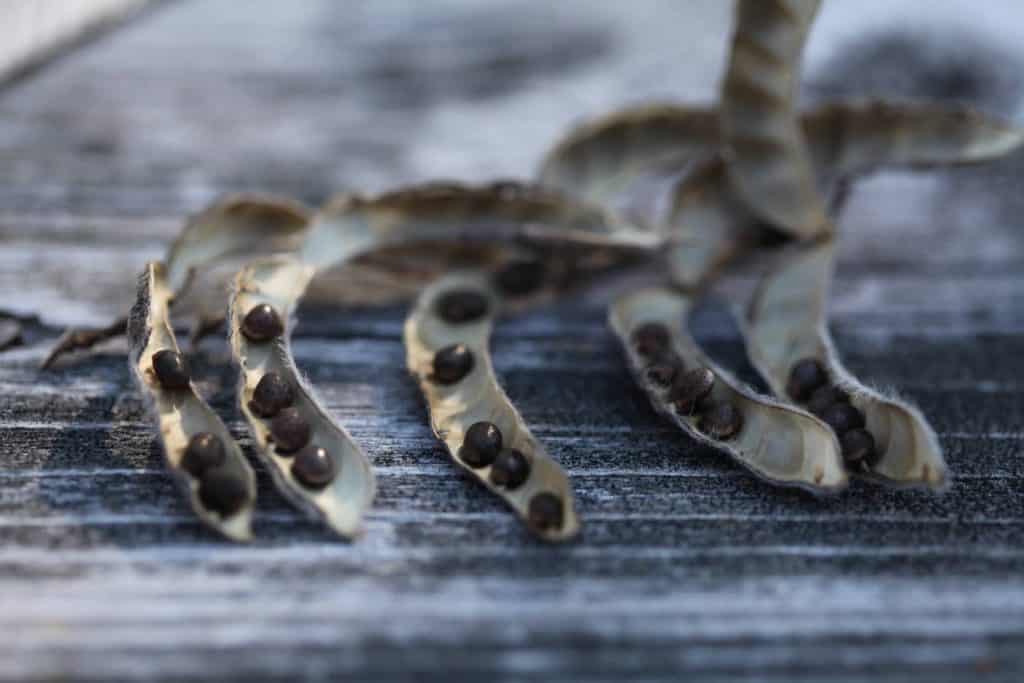
If they are ripe and ready to open, any force on the pod can cause them to pop open during the harvest. This will disperse some or all of the seeds, shooting them out of the pod, and losing the contents.
How Do You Harvest Lupine Seeds from Pods?
I take my pods home, and set them safely away in the gathering container until I am ready to remove the seeds. It's important to spread the stems and pods out to allow good air circulation if you are allowing them to dry further.
You will know that the seeds are ready to harvest when some of the pods on the stem begin to crack open. If the seed pods do not easily open, you can allow them to dry out a little longer.
To remove the seeds from the pods, gently squeeze the sides of the pods to open them up at the seams. When you press on the seed pod it will open with a pop.
Another way which I have found the quickest and easiest, is to take the small stem at the end of the pod (which had been originally attached to the main stem of the plant), and gently pull it back. This will cause the pod to slowly open in entirety and seems to give a more controlled effort without losing many seeds.
Crack the pod down the middle to allow the seeds to fall out.
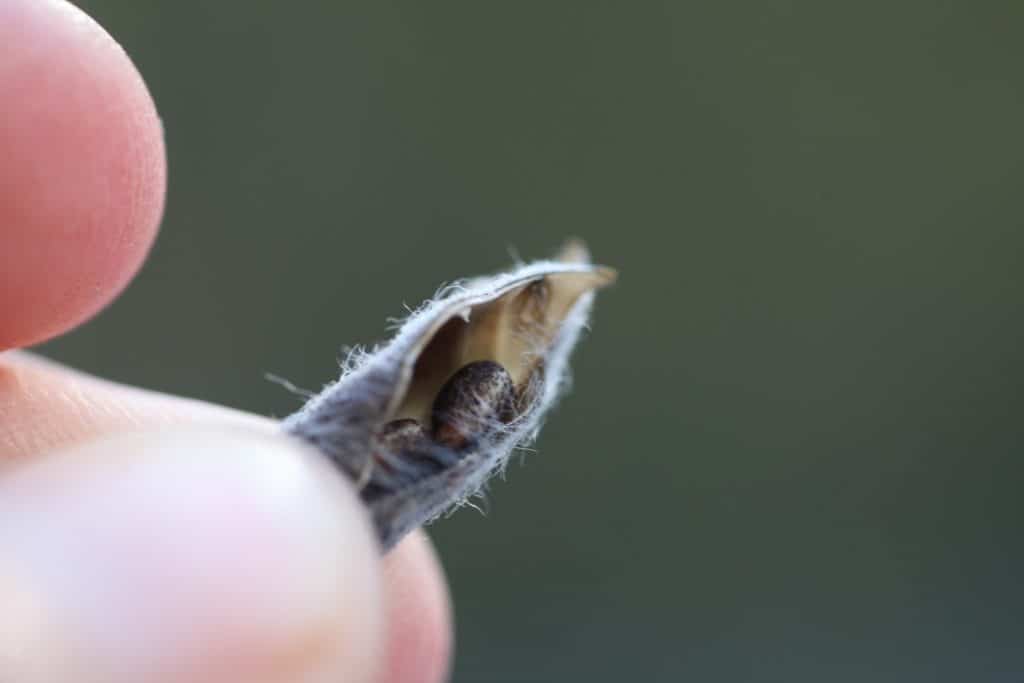
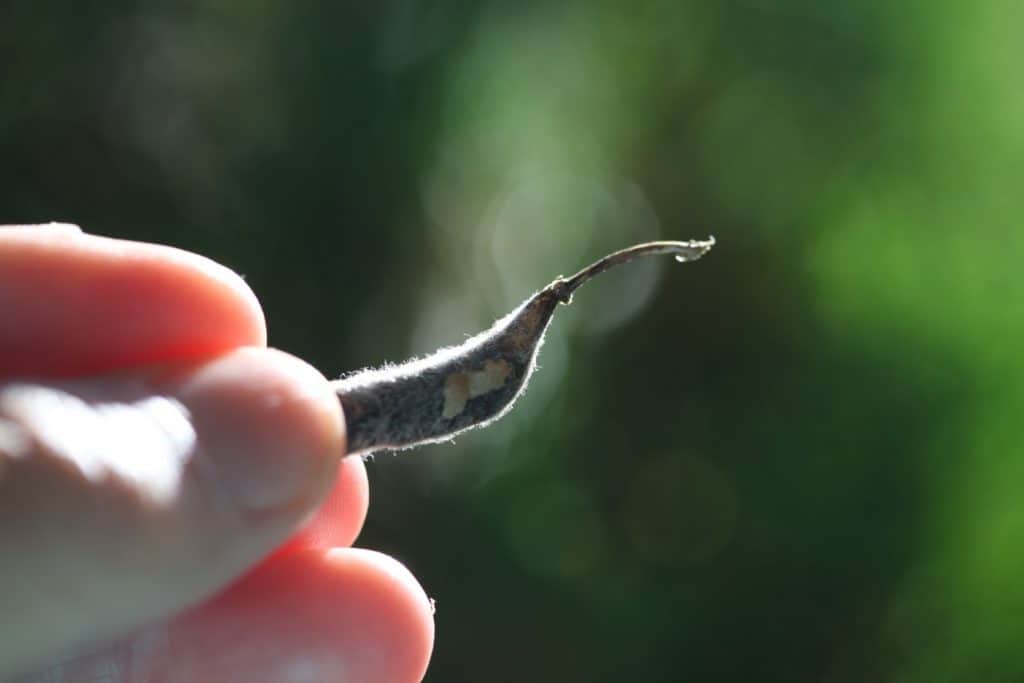
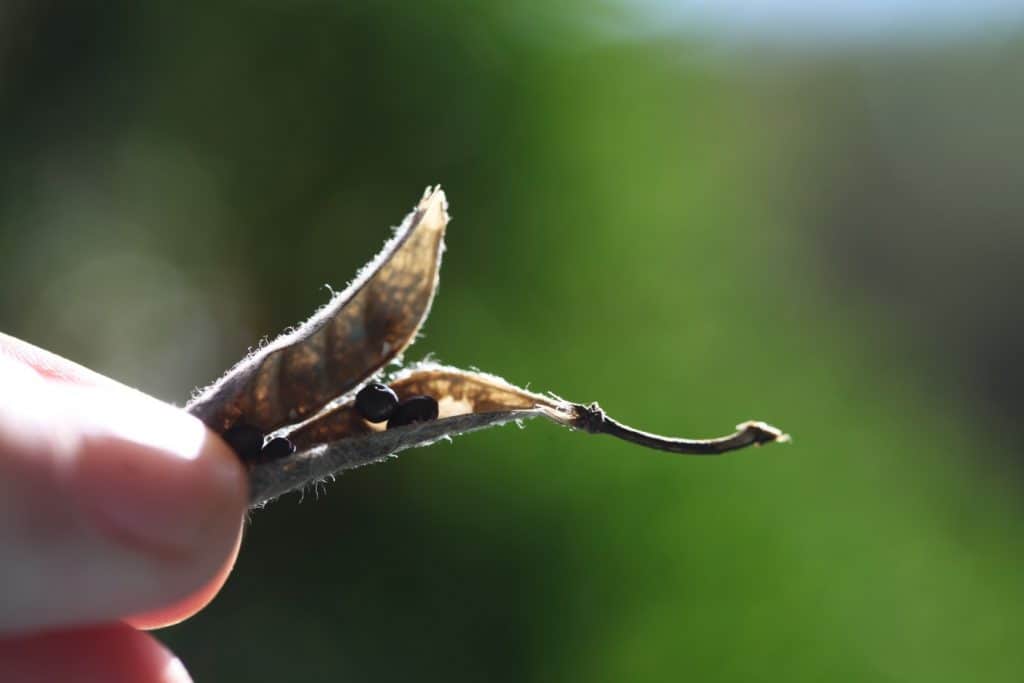
Keep in mind, some of the seeds will pop out, so make sure that you do this over a container to catch any seeds that might escape during this process.
As you open the individual seed pods, place the seeds in a clean bowl to inspect your harvest.
Seed harvest per each pod is generally two to seven seeds on average per pod.
What Do Lupine Seeds Look Like?
Lupine seeds are oval shaped, shiny and brown in colour when mature. The seeds are initially green however, and gradually turn darker as they reach maturity.
If you harvest when they are green, this is too early and you will not likely have successful germination when you plant them.
The seeds measure approximately 0.25 cm on average when fully ripe.
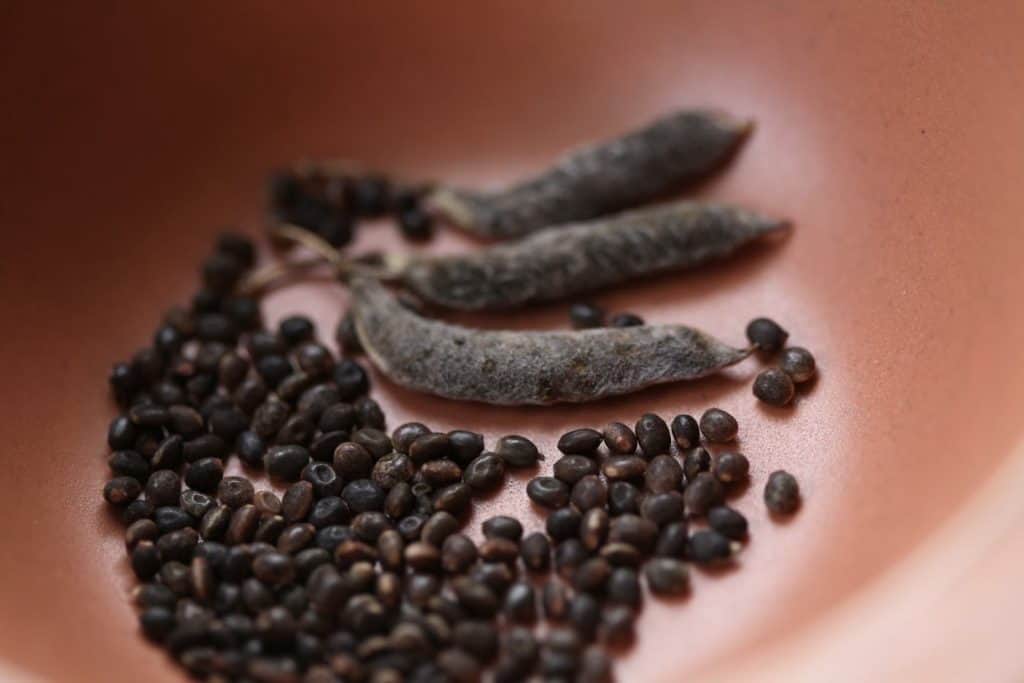
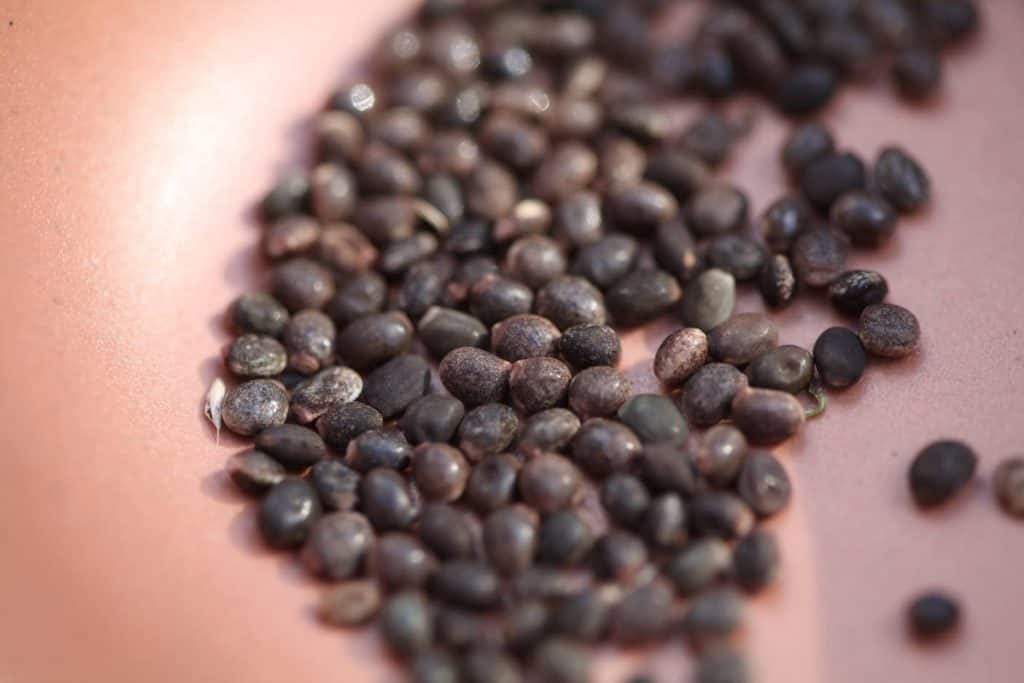
How To Store Lupine Seeds
After harvesting, store the lupine seeds in a paper envelope until dry.
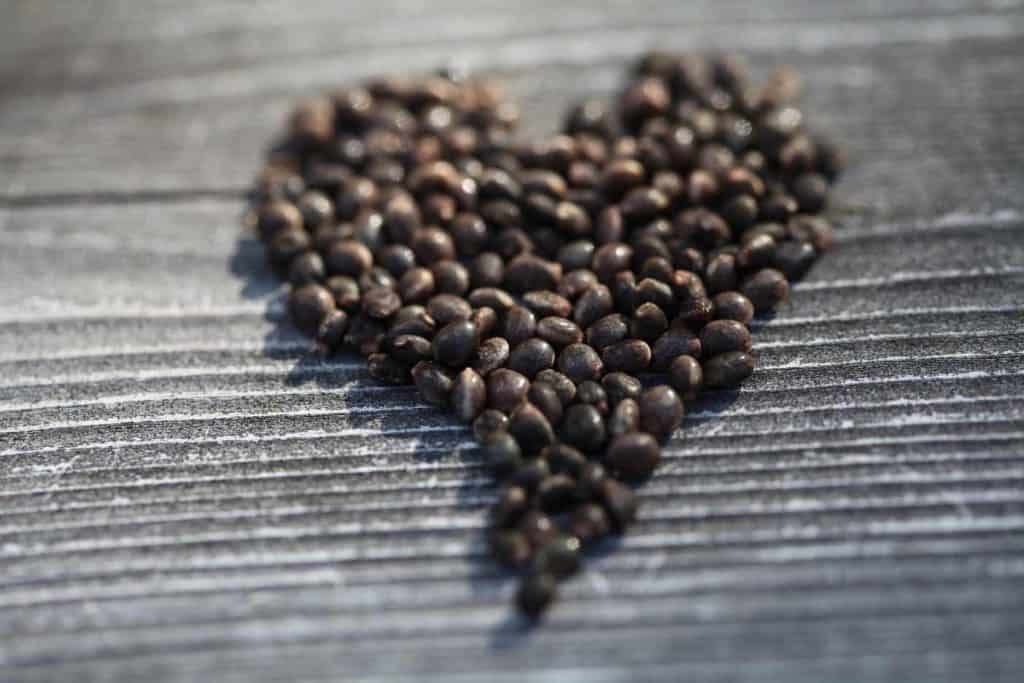
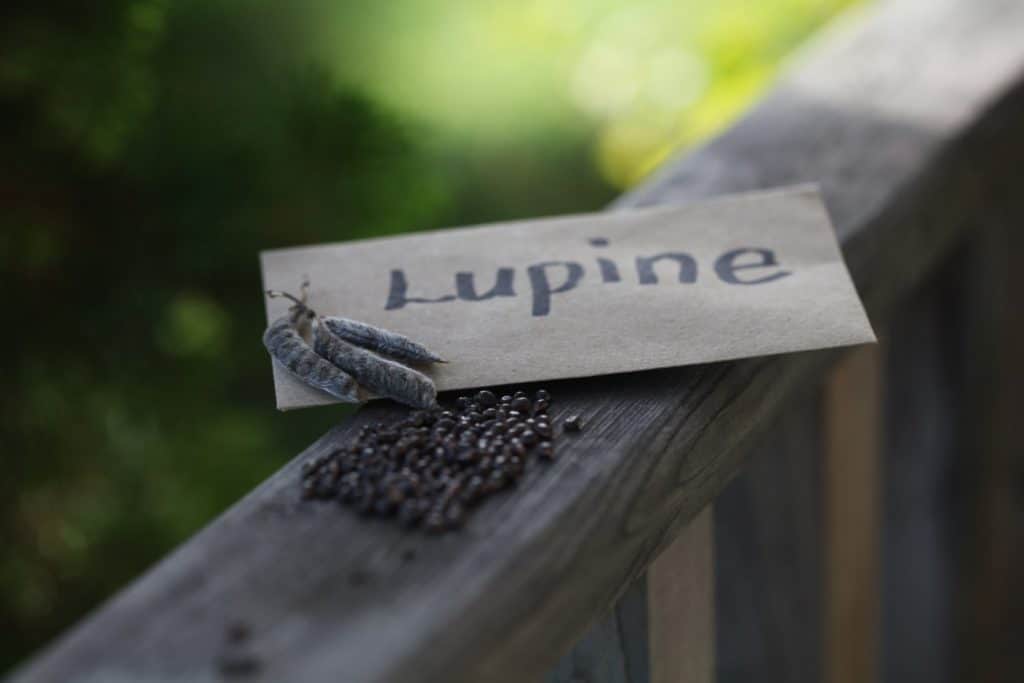
You can keep them in the envelope in a cool dark place, or place in the fridge until you are ready to start the planting process, which starts with a stratification period.
Generally when I stratify seeds, I will put them in a baggie in moist vermiculite, as these seeds require a moist cool chill for germination.
This baggie then goes into the fridge for a thirty day period or longer.
This process is done with the seeds that are started indoors in winter.
You can also plant the seeds using the winter sowing method, which we had great success with our lupine seeds last year.
You can direct seed into the garden in fall to allow natural stratification during the winter, if you live in an area which gets freezing temperatures. Another option is to direct seed stratified seeds in spring.
Finally, if you really want to be hands off but creative at the same time, consider making some seed balls with lupine seeds. It's such a fun project and can be very successful. We plan to do this with many of our seeds this year.
Collect Lupine seeds for a fun fall foraging project. Before you know it, it will be time to plant the seeds and then transplant them out into your garden in spring. And then, in a couple of years with successful planting, you will have your own lupine patch.
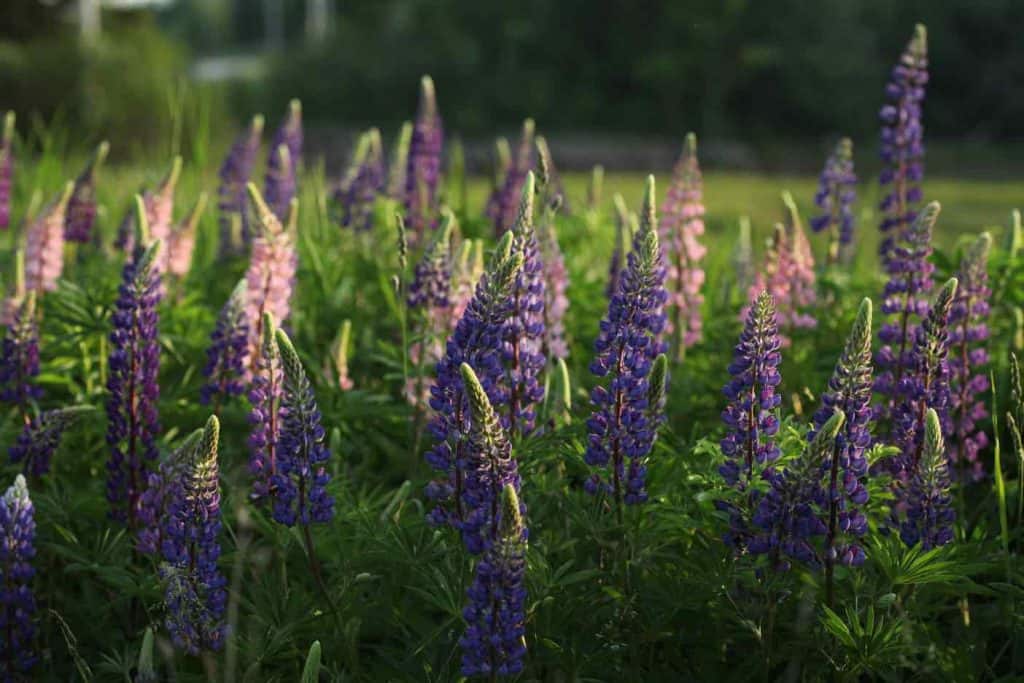
Have you ever tried to collect Lupine seeds? Be sure to leave a comment down below to share your experience!
Other Posts You May Like:
See the Web Story on Collecting Lupine Seeds!
PIN IT FOR LATER!
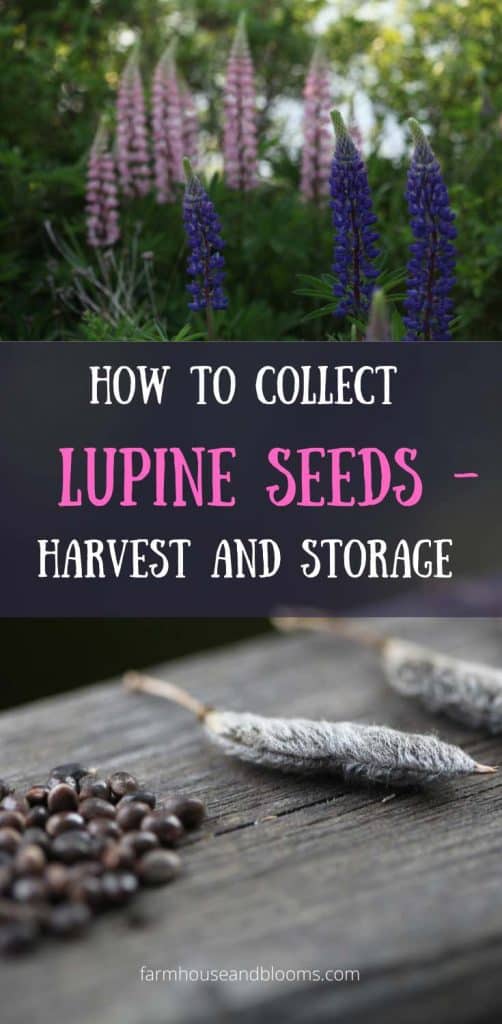
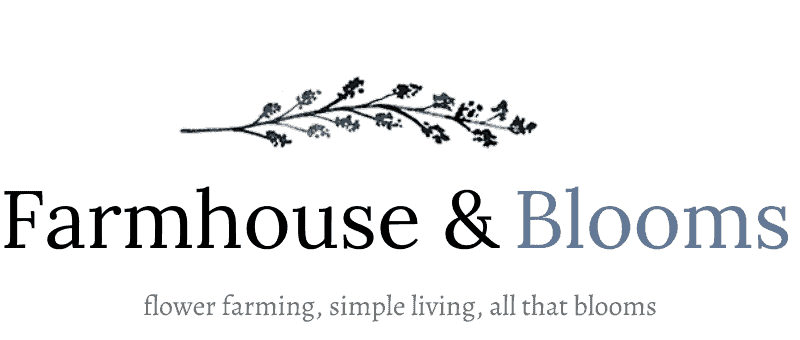

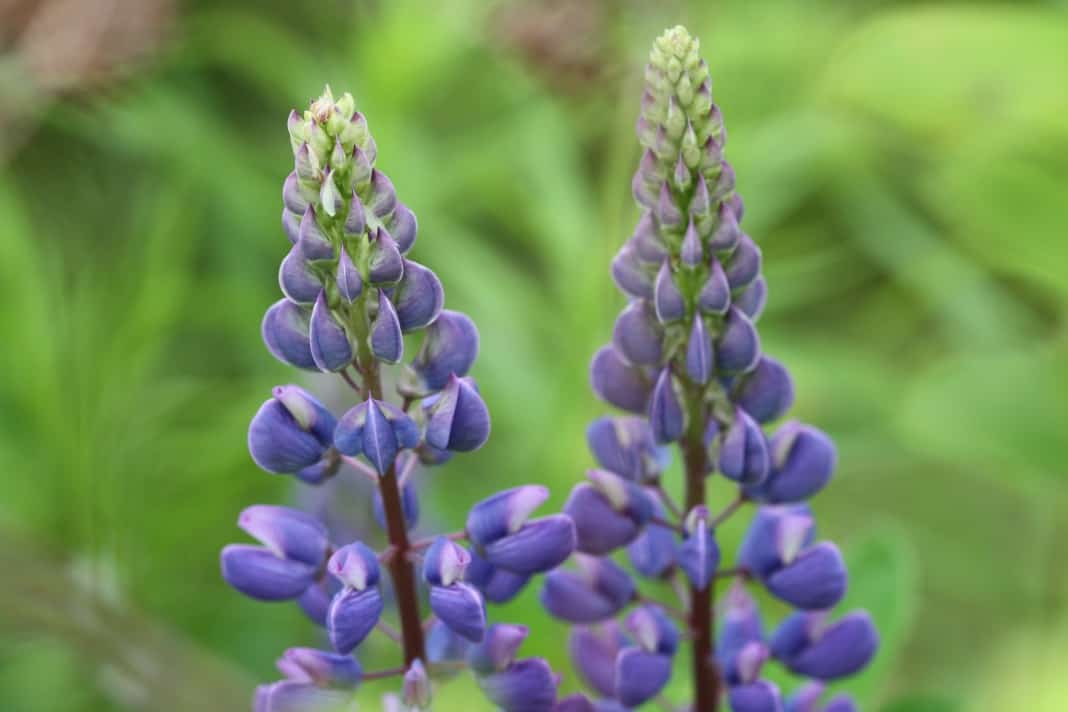
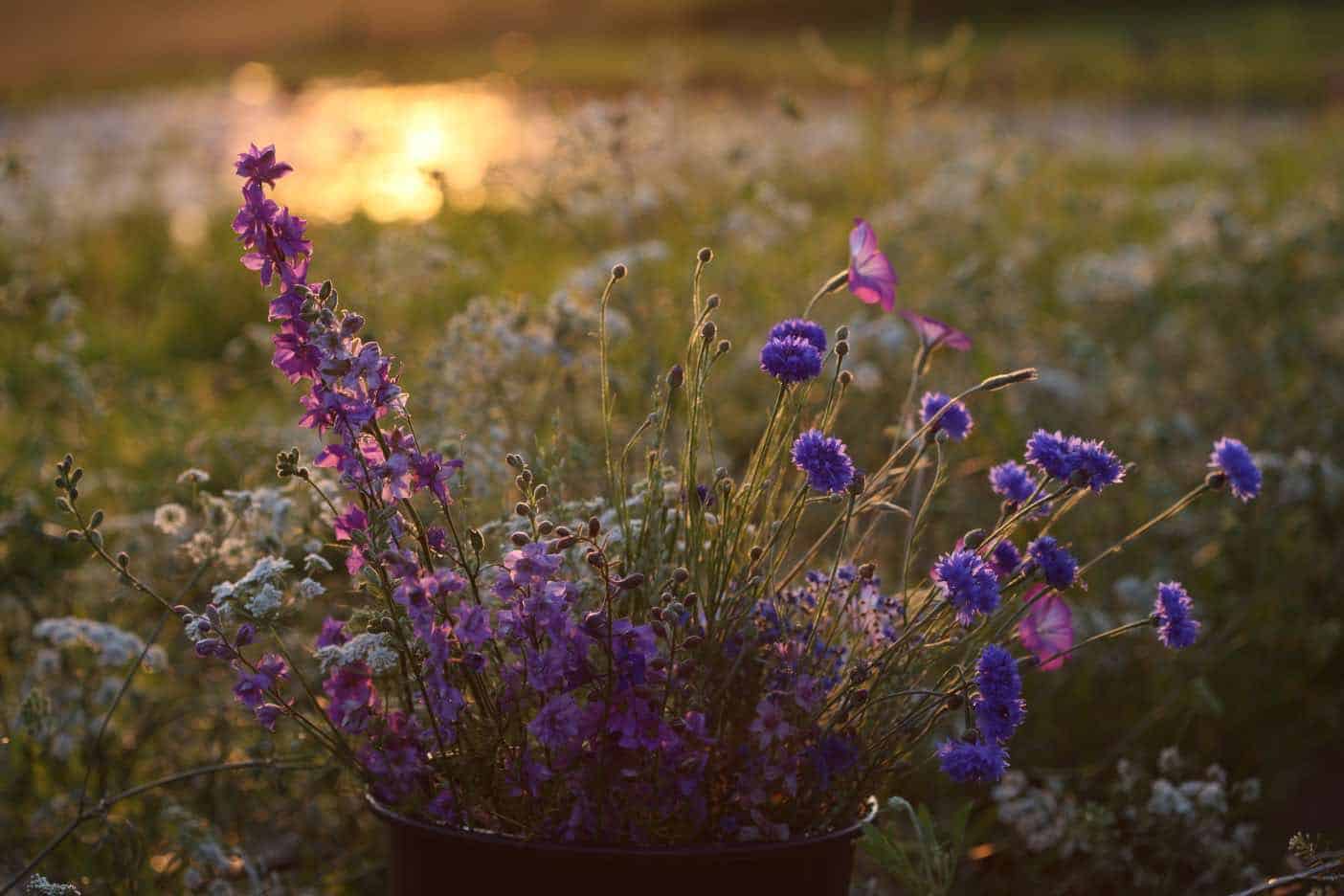
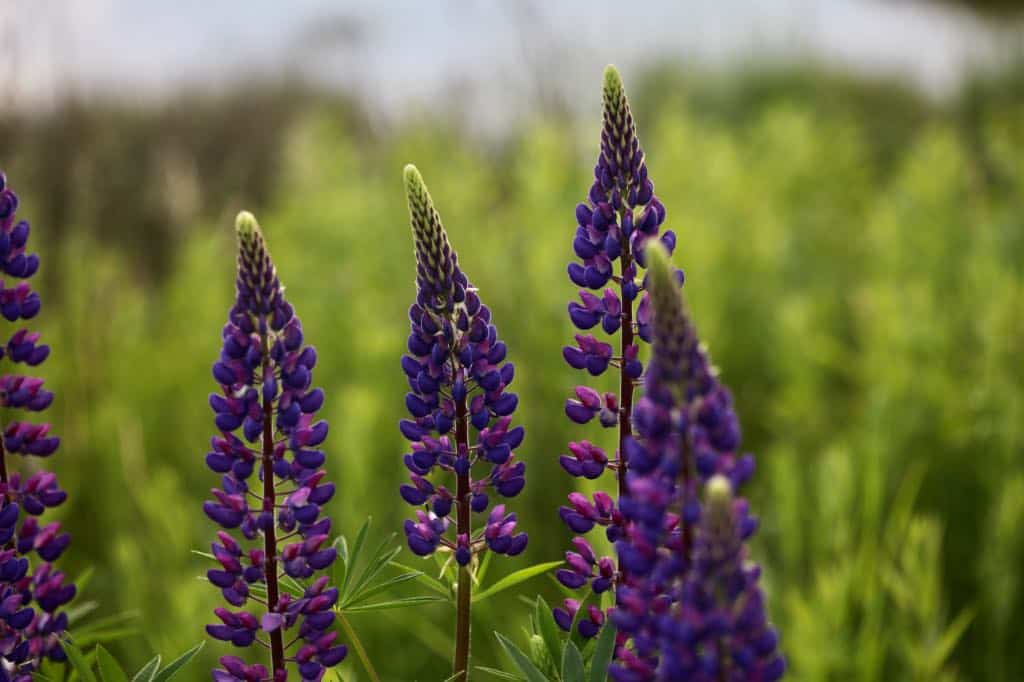

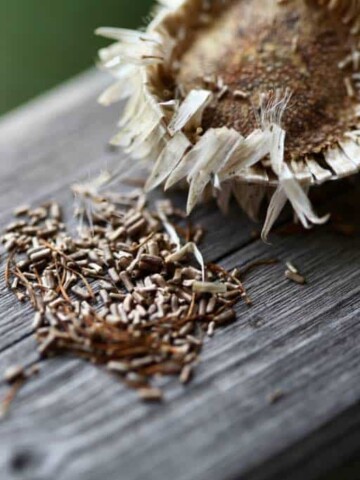
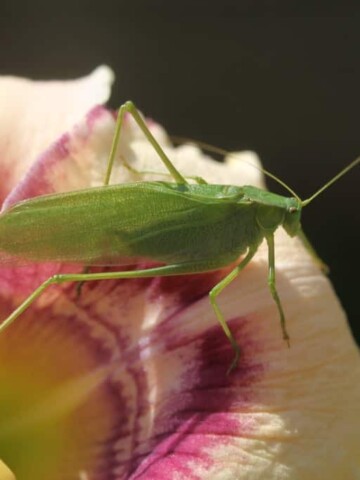

Leave a Reply